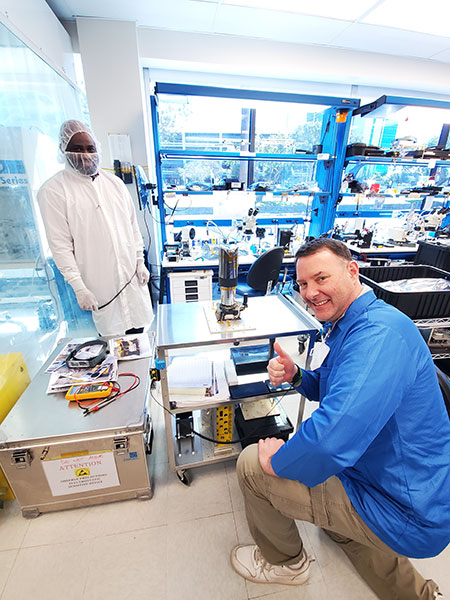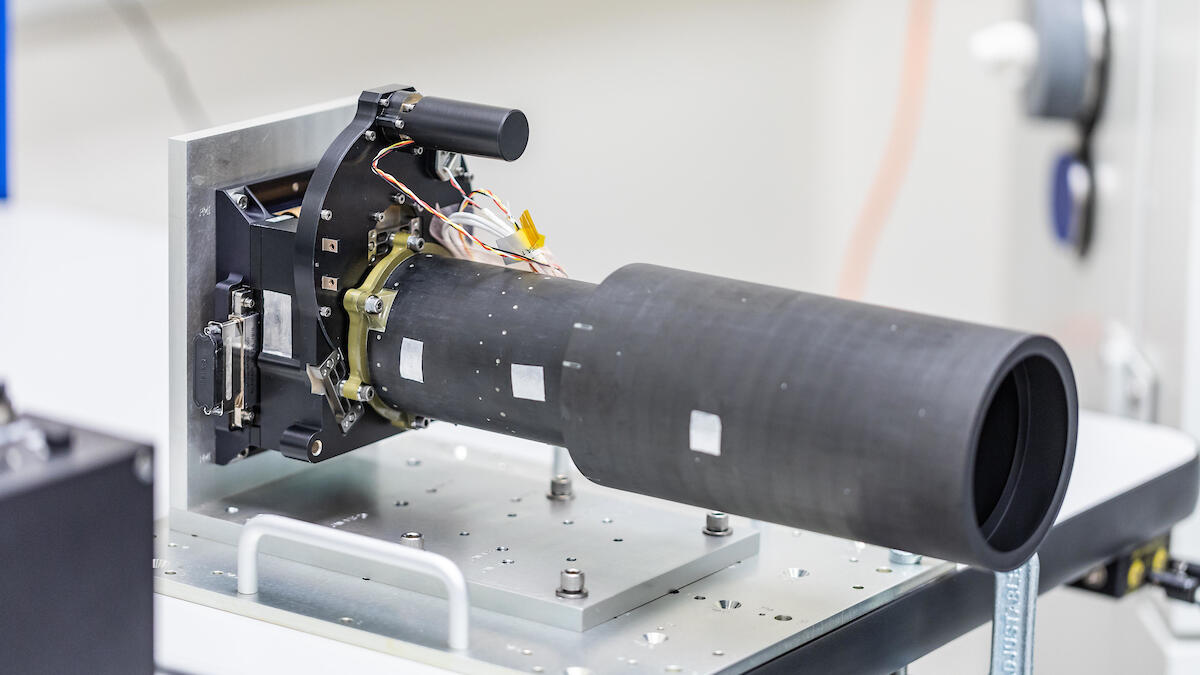UPDATE, Oct. 11: NASA and SpaceX are standing down from the Oct. 12 launch of the agency’s Psyche mission due to unfavorable weather conditions. NASA and SpaceX are now targeting launch at 10:19 a.m. EDT Friday, Oct. 13, from Launch Complex 39A at Kennedy Space Center in Florida.
Editor's note: On Sept. 28, NASA announced that the Psyche launch is now targeted for Oct. 12.
The Psyche spacecraft — on a six-year journey to a metal-rich asteroid of the same name — is scheduled to launch the morning of Oct. 5 from Kennedy Space Center in Florida. Arizona State University is leading the overall mission, as well as the multispectral imager instrument team.
The imager will take approximately 85,000 images in the 26 months Psyche will be in orbit around the asteroid, and those images will help determine whether the asteroid is indeed the core of a small planetesimal that formed early in the history of our solar system, as the Psyche team has hypothesized.
“There’s only two cameras on the entire spacecraft,” said Jim Bell, leader of the multispectral imager instrument team and a professor in ASU’s School of Earth and Space Exploration. “And we rely on them for operations, for navigation and for science.”
The identical cameras — the redundancy reduces risk — will acquire geologic, compositional and topographic data, and they could help determine the mineralogy of any rocky material that may exist on the surface of the asteroid.
MORE: Psyche news
Taking those images and transmitting them to Earth requires months of planning. Bell said the imager instrument team based at ASU is never in real-time control and contact with the spacecraft.
“We’re not watching it live; we’re not driving it,” Bell said.
Instead, the five instrument teams based around the country — for the multispectral imager, the gamma-ray and neutron spectrometer, the magnetometer, the radio science investigation and the Deep Space Optical Communications technology demonstration — work with NASA’s Jet Propulsion Laboratory and NASA’s Multi-Mission Operations Center to come up with an integrated plan to fit all of the requests into, as Bell said, Psyche’s “resource bucket.”
“We work as a group and do ‘horse trading’ back and forth,” Bell said. “This is all done weeks and months before the activity actually happens.”
That plan — a list of instrument and spacecraft software commands — is then radioed ahead to the spacecraft before it’s required to perform any of its functions.

Jim Bell, leader of the multispectral imager instrument team (right) and Malin Space Science Systems camera technician Hakeem Olawale pose for a photo with the first Imager model at Malin Space Science Systems' facility in San Diego. Photo courtesy Jim Bell
Once Psyche begins Orbit A, its high orbit around the asteroid, Bell and his team will spend some time figuring out what they’re looking at through the cameras. That information — they could see craters, ridges, bright spots on the surface, etc. — helps determine the images the spacecraft will take as it orbits closer to the asteroid.
“To use an analogy, think of planning to hike down to the Grand Canyon floor,” Bell said. “You’re going to start up on the rim, look down at the trail and figure out the best way to get down there. … (Once in orbit) we’re going to see what shape the asteroid, instruments and spacecraft are in and take the lay of the land.”
An interesting point: The cameras are made to be tough, due in part to the conditions they will encounter in space.
“What’s really unique about these cameras is … that they are rugged-ized to handle the incredible vibrations and shocks from launch, the hard vacuum environment of space, and the big temperature swings from in the sunlight where it can get quite hot and then in the shadows where it gets really cold,” Bell said.
The multispectral imager has the same digital image sensors as the science cameras on the Mars Curiosity and Perseverance rovers. There is a good reason for that. Testing out technology in deep space — where repairs to a robotic spacecraft can’t be made — isn’t a good idea.
“We can’t take risks,” Bell said.
In those 26 months in orbit, Psyche will move from high to low orbits, getting as close as about 75 kilometers (about 47 miles) from the asteroid, Bell said. The data from the images will flow into NASA’s Deep Space Network radio antennas on Earth and then almost immediately to ASU’s multispectral imager team.
“The frequency of those image data downlinks could be daily, it could be a couple of times a day, it could end up being less frequent,” Bell said, noting that the spacecraft will also be performing functions at the same time for the other instrument teams. “But hopefully every couple of days we should get a big downlink of hundreds and hundreds of images.”
This is Bell’s 11th robotic mission working with NASA.
“I’ve been hopping around the solar system,” he said with a laugh.
Now his focus will be on an asteroid shaped like a baked potato and approximately the size of the state of Massachusetts — an asteroid whose secrets will be revealed through the photos taken by ASU’s multispectral imagers.
About the NASA Psyche mission
The mission is led by Arizona State University. NASA’s Jet Propulsion Laboratory is responsible for the mission’s overall management, system engineering, integration and testing and mission operations. Maxar Technologies delivered the solar electric propulsion chassis, the main body of the spacecraft and most of its engineering hardware systems. NASA's Launch Services Program at Kennedy Space Center manages launch operations.
For more information about the NASA Psyche mission, go to nasa.gov/psyche and psyche.asu.edu.
Top image: The Psyche mission's multispectral imager instrument is shown in the process of assembly and testing on Sept. 13, 2021, at Malin Space Science Systems in San Diego. The multispectral imager is sensitive to visible light like we can see with our eyes, but also to light just beyond what humans can see, using filters in the ultraviolet and near-infrared wavelengths. The photos taken in these filters will reveal the Psyche asteroid's geology and topography, and could help determine the mineralogy of any rocky material that may exist on the surface of Psyche. Photo by NASA/JPL-Caltech/ASU/MSSS
More Science and technology

ASU and Deca Technologies selected to lead $100M SHIELD USA project to strengthen U.S. semiconductor packaging capabilities
The National Institute of Standards and Technology — part of the U.S. Department of Commerce — announced today that it plans to award as much as $100 million to Arizona State University and Deca…

From food crops to cancer clinics: Lessons in extermination resistance
Just as crop-devouring insects evolve to resist pesticides, cancer cells can increase their lethality by developing resistance to treatment. In fact, most deaths from cancer are caused by the…

ASU professor wins NIH Director’s New Innovator Award for research linking gene function to brain structure
Life experiences alter us in many ways, including how we act and our mental and physical health. What we go through can even change how our genes work, how the instructions coded into our DNA are…
